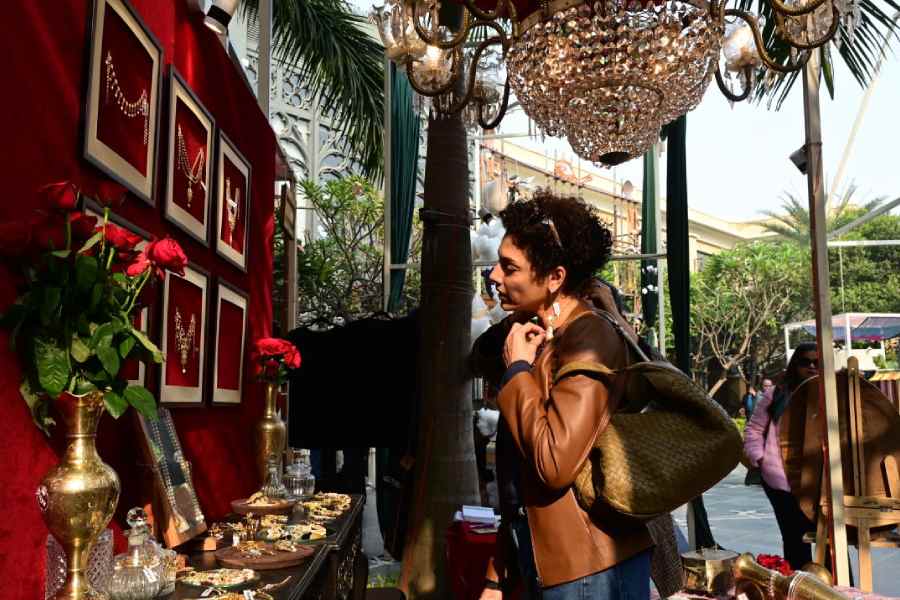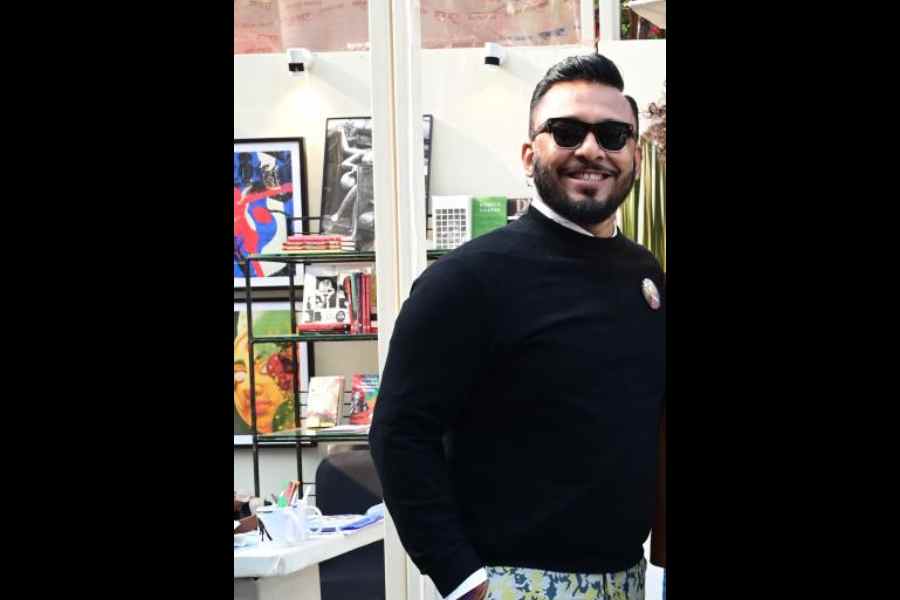A Calcutta Story at season eight of Chivas Glassware presents The India Story — a Neotia Arts Trust Initiative, in association with t2, was a highlight segment of the three-day fashion and lifestyle exhibition, held at Swabhumi. Conceptualised by Madhu Neotia and curated and executed by Anindya, Sonia, Shibaji and Nil, the section put together on the Raajkutir Courtyard was an experiential showcase. It was a celebration of the City of Joy’s culture, cuisine, fashion and art through its display and performances. An amalgamation of the city’s old and the new, it was an effort of not many minds but rather many hearts, and how they perceive the city through what they do. Nil takes t2 through the journey:
Tell us about the inception of ‘A Calcutta Story’.
When we started India Story eight years ago, Madhu (Neotia) really wanted something like this. Somehow people also wanted to shop and see what Calcutta is all about at TIS. While we get all the brands from across the country, people always ask if they can buy something from here. The idea was to show what modern, contemporary Calcutta is all about. We reached out to people I believe in. That’s how ‘A Calcutta Story’ germinated. It is big but also cute and small at the same time. The canvas is just right. Everybody is coming and saying it is beautiful.
How did you decide on the design of the showcase on the courtyard space?
When I submitted the design, nobody believed me. Everyone was like… we don’t know the stall space. Everybody was concerned about being positioned at the back of each other. People were confused about how it would work. I told them that when people come to shop, they will seek them out. When you have good products, people will seek you out. I told them I will not change the design, they need to innovate with the space. There was a big fight! I knew it would be something spectacular. I already had a vision of it.

Indrani Dasgupta spotted shopping at A Calcutta Story on day three Pabitra Das.
How did you select the participants?
145 East has a young clientele and made gamchha cool. Bibidi (Bibi Russell) is of course there. Bashobidi (Bashobi Tewari), a NID pass-out, does these beautiful chatais. She is a UNESCO award-winning designer; Narayan (Sinha) was busy but then sent a client piece. I can kind of cajole, bully and convince. (Laughs) But when they knew I was doing it, they said okay. Then Byloom, it has a certain aesthetic. The idea of curating was those who are playing with tradition and giving it a more contemporary twist, which is relevant for the coming generation. Bobo (Ayushman Mitra) is a dear friend and a large explosion in the fashion field, primarily an artist. We worked together for the event that launched India Story, the Thakurdalan edit. Anumitra’s edible archives and the grazing table were another attraction. She looks at Bengali ingredients and kind of brings in her own twist to it. Curation is about taking risk of the known and the unknown. And of course Anindya Hajra. I had to give him the support and space, and I knew he would do a great job. It is something people were intrigued by. India Story from the beginning was an experiential thing. We have shopping malls, why would people come here? They should come and feel that they will go back with a part of India Story or Calcutta Story.
What was the idea of the heirloom edit?
I have always encouraged my clients to bring pieces that they have inherited and we always repurpose them. But some pieces have so much history that you don’t want to touch, you want to leave it for the next generation. Anindya (Hajra) highlighted its fragility. They may be fragile but let’s show it in its truest form. The entrance, Madhu had this idea of women of Bengali films, Anindya took it and created a fantastic edit of stories overlapping in the video installation. Women of everyday life of Bengal and they are the actresses of yesteryears. Daytime it was sound installation and nighttime it was video installation.
Performances were also part of the edit…
Sourendro and Soumyojit were given a brief. I told them, think of Calcutta as a melting pot. It was about being inclusive. The music ranged from Bangla to Hindi and Urdu to Tamil. That set the tone for the night. In the evening, we played old-world jazz. We had a thriving industry… people coming to Park Street… we wanted to incorporate all of that.
Is there anything in particular you wanted to focus on through this curation?
Little details. On the sheer organza, we used prints of colloquial language to see how it can be used to create patterns and, of course, Calcutta’s history is important. When you enter, you enter through that space of history but then you enter into the open space, you see stalls like Bobo, Seagull Books, Scarlet Splendour and Narayan. I wanted people to enter an experiential zone which is not too intimidating.
